The marketplace for case solutions.

Toyota Motor Manufacturing, U.S.A., Inc. – Case Solution
Doug Friesen, the manager of assembly for the Toyota Motor Manufacturing plant in Georgetown, Kentucky was facing a huge problem regarding its car seats. Several of their cars came up with either having defective seats or without any seat at all. It resulted in employees being engaged to work overtime to resolve the problem but the cause of the problem cannot be identified. Without identifying the cause, the company cannot come up with an appropriate solution.
Kazuhiro Mishina Harvard Business Review ( 693019-PDF-ENG ) September 08, 1992
Case questions answered:
Case study questions answered in the first and second solutions:
- As Doug Friesen, what would you do to address the seat problem at the Toyota Motor Manufacturing, U.S.A. plant? Where would you focus your attention and solution efforts?
- What options exist? What would you recommend for the short-term and long-term? Why?
- Where, if at all, does the current routine for handling defective seats deviate from the principles of the Toyota Production System?
- What is the real problem facing Doug Friesen?
Case study questions answered in the third solution:
- What are the key principles that TPS incorporates? Which ones did they fail to follow?
- What is the cost of a chord pull resulting in a line stoppage of 1 minute? 30 minutes? 60 minutes? What is the value of a chord pull?
- How should Doug Friesen address the seat problem of Toyota Motor Manufacturing Inc.? As Doug Friesen, where would you focus your attention and solution efforts?
Not the questions you were looking for? Submit your own questions & get answers .
Toyota Motor Manufacturing, U.S.A., Inc. Case Answers
You will receive access to three case study solutions! The second and third solutions are not yet visible in the preview.
Q1. As Doug Friesen, what would you do to address the seat problem at Toyota Motor Manufacturing, U.S.A. plant? Where would you focus your attention and solution efforts?
The deteriorating quality of seats continued to be an issue at Toyota Motor Manufacturing, U.S.A., Inc. (T.M.M.) owing to the Just-In-Time policy followed at their end. The problems ranged from the delivery of defective seats to failure in seat replacement for the defective ones.
Changes and proposed solutions are as follows:
- The introduction of numerous variants led to issues in seat quality management as the operations at the end of KFS were initially streamlined and in line with T.M.M.’s goals. Postponement of customization of colors can lead to a reduction in the variants during the production stage and can be customized after the seats pass the quality check.
- Quality Control needs to be performed either at the outbound stage of KFS (as per T.M.M. standards) or at the inbound stage of Toyota Motor Manufacturing, U.S.A.

Instead of keeping the faulty seats on the assembly line, it is better to move to the Code 1 Clinic Area immediately so that the problems in the seat can be identified and rectified. It also helps in the company’s adherence to the Jidoka concept. Adoption of Just-In-Time in the Code 1 Clinic Area for seat reworks as well to reduce the delay in the rework process.
Proper seat assembly needs to be cross-checked at the Inbound stage itself by T.M.M. for special deliveries.
Q2. What options exist? What would you recommend? Why?
The alternatives are as follows:
- Review of available variants to identify if all of them are necessary or not. Reduction in slow-moving variants can streamline the process.
- Toyota Motor Manufacturing, U.S.A. should take up the Quality Control process of KFS in association with KFS’s quality department by providing expertise and developing solutions to match the requisite standards.
- Search for a new supplier who could deliver quality products on Just-In-Time. o Multi-Vendor Policy
- Trend analysis (Exhibit 10) shows an increasing number of Andon Pulls as the month progresses for Rear Seats. The underlying issues have to be identified and rectified.
- Safety Inventory needed to be maintained for Seats so that the delay from the supplier wouldn’t affect the T.M.M.’s production cycle.
Recommendation : Out of the alternatives mentioned above, we would suggest Toyota Motor Manufacturing, U.S.A…
Unlock Case Solution Now!
Get instant access to this case solution with a simple, one-time payment ($24.90).
After purchase:
- You'll be redirected to the full case solution.
- You will receive an access link to the solution via email.
Best decision to get my homework done faster! Michael MBA student, Boston
How do I get access?
Upon purchase, you are forwarded to the full solution and also receive access via email.
Is it safe to pay?
Yes! We use Paypal and Stripe as our secure payment providers of choice.
What is Casehero?
We are the marketplace for case solutions - created by students, for students.
- Harvard Business School →
- Faculty & Research →
- September 1992 (Revised September 1995)
- HBS Case Collection
Toyota Motor Manufacturing, U.S.A., Inc.
- Format: Print
- | Pages: 22
More from the Author
- Faculty Research
Process Flow Design Exercise, Videotape
- February 1994 (Revised March 1994)
Project Ghost Busters (D)
- February 1994
Project Ghost Busters (C)
- Process Flow Design Exercise, Videotape
- Project Ghost Busters (D)
- Project Ghost Busters (C)
- Plug-in Hybrid
- Crown Signia
- Grand Highlander
- Land Cruiser
- Concept Vehicles
- Historic Vehicles
- 2025 Toyota 4Runner
- CALTY 50th Anniversary
- 2024 Toyota Land Cruiser
- 2024 Toyota Tacoma
- New Product Showcase
- Los Angeles
- Global Shows
- What’s New for 2025
- What’s New for 2024
- What’s New for 2023
- What’s New for 2022
- Images & Videos
- Latest News
- Sales & Financial
- Voluntary Recalls
- Takata Info
- Environmental
- Community Engagement
- Diversity & Inclusion
- Finance, Insurance & Banking
- Advanced Technology
- Research & Development
- Safety Technology
- Motorsports
- Company History
- Executive Bios
- Media Contacts
- Takata Recall
Home > Corporate > Manufacturing

Toyota’s U.S. Manufacturing Footprint: Impacting Communities with Innovation and Respect
For more than 60 years, Toyota has been a part of the cultural fabric in the United States, establishing communities centered around manufacturing in cities across North America. In fact, many of the people driving Toyota cars and trucks in these areas often have a good idea about who had a hand in assembling them.
“Our family members are the customers,” says Norm Bafunno, senior vice president of Unit Manufacturing and Engineering at Toyota Motor North America (TMNA). “And there’s nothing more rewarding than hearing feedback from them about the Toyotas they’re purchasing and knowing we had a part in that. It’s a source of great pride.”
Today, Toyota operates 14 manufacturing plants in North America, and employs more than 32,000 people to design, engineer and assemble almost half of the vehicles Toyota sells in the United States. By manufacturing in North America, Toyota supports regional suppliers and economies, fosters local communities and assembles high-quality cars and trucks for customers. Toyota’s commitment to assembling vehicles where they are sold not only benefits the areas surrounding local plants, but also helps the company better understand its customers.
“I think that pride in manufacturing resonates within our plants and creates products that will exceed customer expectations,” Bafunno says. “Manufacturing where we sell is what we need to do to be successful in the marketplace.”

Each TMNA manufacturing plant benefits the local economy directly by creating new jobs for people in the region. But according to Bafunno, throughout his career, he’s witnessed firsthand how the manufacturing plants establish and cultivate a sense of community spirit that employees carry with them well beyond the campus grounds.
“During my 24 years at Toyota, I’ve watched manufacturing evolve,” Bafunno says. “I was at the third assembly plant built. As I’ve watched us grow, what I’ve noticed the most is our impact on the lives of people.”
Creating Community
A Toyota plant creates a whole ecosystem within a region, according to Brian Krinock, senior vice president of Vehicle Plants, TMNA. Krinock, who has been with Toyota for 30 years, has spent time at almost every manufacturing plant built in North America. He says that when you factor in the size of each plant — between 400 to 9,000 employees — and include the families of each employee, contractor and supplier, it exponentially increases the number of people in a community impacted by Toyota.
“The impact we have in a community is huge,” Krinock says. “We want to be a good citizen wherever we do business, because we live there, our families are there, and it is important to us to be a part of our communities.”
Krinock believes that much of this attitude stems from Toyota’s company values, which each employee takes to heart both in the workplace and beyond.

“We’re all about our values, ‘Respect for People’ and ‘Continuous Improvement,’” Krinock says. “Having strong values is the most important part of a company culture, and we’ve really fostered that throughout Toyota.”
Toyota employees often volunteer to lead nonprofit boards that provide needed services, such as donating and delivering to food pantries and crisis centers. But while Toyota supports employee groups and fundraisers like Relay for Life and Susan G. Komen’s Race for the Cure, Bafunno says people are quick to help their fellow colleagues and families beyond those organized events — and he’s seen more examples than he can count.
“I find that the communities we are a part of recognize who we are not by some great commercial or someone’s great speech, but by the actions our employees take every day in the community,” Bafunno says. “When a family’s world gets disrupted by some terrible event, our employees step up to contribute. It makes you incredibly proud to be a Toyota employee.”
Continuous Improvement, Across the Board
In addition to charitable work, when employees embrace Toyota’s values, it often leads to innovation, learning and discovery of new ways to get things done on the job. Both Bafunno and Krinock believe that everyone in the organization can embody the culture of “Continuous Improvement,” no matter what they do at Toyota.
“Part of the participation in Toyota goes well beyond the normal job,” Bafunno says. “It goes into using your knowledge and experience to make things better — and that goes for everybody in the organization. It’s a fundamental part of our process.”

For example, someone in manufacturing may assemble a nut and bolt in a way that makes it more efficient to grab on the line, or an engineer may improve the way a project is sourced to make it less expensive. Many employees’ proposals build off one another and become incredible innovations over time. Plus, some Toyota employees have even patented their great ideas.
“I want everyone to know that our people are the biggest asset we have,” Krinock says. “Ideas come from the floor, come from the middle to the top of the company all the time. Everyone at Toyota has the ability to change what we do each and every day.”
Building a Sustainable Way Forward
Many of the innovations and ideas that come from employees have to do with sustainability. As Toyota works to reduce waste and make improvements to reach carbon neutrality, its manufacturing plants are doing their part.
“Believing in sustainability is ‘Respect for People,’” Krinock says. “One, because we need to respect our communities. But also, we respect the people who come up with better ideas and empower them to make changes. Our best sustainability ideas come from someone on the floor who says, ‘Hey, why are we doing this this way? Why are we using cardboard? Can we deliver this differently?’”
There’s a misconception that manufacturing, an industry that assembles and creates things, isn’t focused on sustainability, but Bafunno thinks that people would be surprised about the processes that are already in place at each of Toyota’s plants. Almost all plants have established eco zones, which are on-site natural habitats. There are policies to lower water consumption, curb emissions and reuse plastics. In addition, Toyota has some of the first zero-landfill manufacturing facilities in the country. And that’s just the beginning.

“When it comes to sustainability, we have a lot of change coming,” Bafunno says. “It’s a big priority for us. Each of us has these strong pillars of responsibility because it creates job security. If we sit still, our competition is going to blow by us, and we’ll lose some of that stability if we’re not in a leadership role.”
Within the manufacturing team, there’s a strong understanding of the idea of “Continuous Improvement” and a push for more innovation. Both Krinock and Bafunno believe that within the automotive industry, the next few years are going to be transformative — and full of excitement.
“I’ve been in the industry for 36 years,” Krinock says. “The change we’re seeing in automotive right now is like we’ve never seen before. We’re changing the technologies and materials, electrifying our vehicles, updating structures of the vehicle itself and using more recyclable products. Going forward, it’s only going to continue to evolve — and Toyota will be a part of that.”
Tracing Toyota’s U.S. Manufacturing Journey
From its modest beginnings selling just 288 vehicles in 1957, Toyota has been etched into the U.S. cultural fabric for more than 60 years. Here in our backyard, Toyota contributes to world-class design, engineering and assembly of vehicles. Toyota continues to expand its U.S. operations and investment in local communities, while innovating for a better world.
10 U.S. manufacturing plants 1
Hover over the map to explore Toyota's U.S. manufacturing footprint.
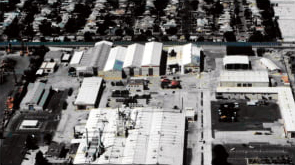
Toyota Motor Manufacturing, Texas

Toyota Motor Manufacturing, Missouri
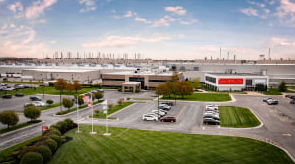
Toyota Motor Manufacturing, Indiana
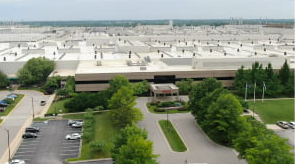
Toyota Motor Manufacturing, Kentucky
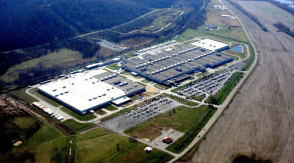
Toyota Motor Manufacturing, West Virgina
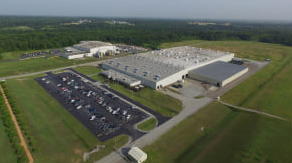
Toyota Motor Manufacturing, Tennessee

Toyota Motor Manufacturing, Mississippi

Mazda Toyota Manufacturing

Toyota Motor Manufacturing, Alabama

Toyota Battery Manufacturing, North Carolina
Years manufacturing in the U.S. 2
Employees 3
Vehicles assembled and counting 4
Direct investment in the U.S.
Toyotas assembled 5 and exported to 40 countries
Funds donated to U.S. communities and causes
Vehicles sold in 2020
Vehicles assembled in 2020
Employee volunteer hours invested in 2020
Hybrid models sold in the U.S. 6
Gallons of water recycled or reused 7
Pollinator gardens supporting monarch butterflies' migration
Originally published October 5, 2021
Related Stories

Toyota’s Rhonda Gilyard Honored with 2024 Women in Manufacturing Hall of Fame Induction

Corey Heim Is One To Watch

Toyota’s New Risk-ATTEND Program Is On the Fast Track To Help Keep Teen Drivers Safe
Email sign up.
Enter your email address below to sign up for email alerts.
* Indicates Required
Thank you for subscribing. Please check your email to validate your sign up.
You are already subscribed, your mailing lists have been updated.
Copyright Notice
All materials on this site are for editorial use only. The use of these materials for advertising, marketing or any other commercial purpose is prohibited. They may be cropped but not otherwise modified. To download these materials, you must agree to abide by these terms.
Brought to you by:

Toyota Motor Manufacturing, U.S.A., Inc.
By: Kazuhiro Mishina
On May 1, 1992, Doug Friesen, manager of assembly for Toyota's Georgetown, Kentucky, plant, faces a problem with the seats installed in the plant's sole product--Camrys. A growing number of cars are…
- Length: 22 page(s)
- Publication Date: Sep 8, 1992
- Discipline: Operations Management
- Product #: 693019-PDF-ENG
What's included:
- Same page, Teaching Note
- Same page, Educator Copy
- Same page, Supplements
$4.95 per student
degree granting course
$8.95 per student
non-degree granting course
Get access to this material, plus much more with a free Educator Account:
- Access to world-famous HBS cases
- Up to 60% off materials for your students
- Resources for teaching online
- Tips and reviews from other Educators
Already registered? Sign in
- Student Registration
- Non-Academic Registration
- Included Materials
On May 1, 1992, Doug Friesen, manager of assembly for Toyota's Georgetown, Kentucky, plant, faces a problem with the seats installed in the plant's sole product--Camrys. A growing number of cars are sitting off-line with defective seats or are missing them entirely. This situation is one of several causes of recent overtime, yet neither the reason for the problem nor a solution is readily apparent. As the plant is an exemplar of Toyota's famed production system (TPS), Friesen is determined that, if possible, the situation will be resolved using TPS principles and tools. Students are asked to suggest what action(s) Friesen should take and to analyze whether Georgetown's current handling of the seat problem fits within the TPS philosophy.
This case is accompanied by a Video Short that can be shown in class or included in a digital coursepack. Instructors should consider the timing of making the video available to students, as it may reveal key case details.
Learning Objectives
Provide comprehensive knowledge on Toyota Production System,
Exercise advanced root cause analysis, and
Demonstrate the totality of manufacturing, especially the link between production control and quality control.
Sep 8, 1992 (Revised: Sep 5, 1995)
Discipline:
Operations Management
Harvard Business School
693019-PDF-ENG
We use cookies to understand how you use our site and to improve your experience, including personalizing content. Learn More . By continuing to use our site, you accept our use of cookies and revised Privacy Policy .

Online Business School
Beginner to Advanced Online Business Training

Toyota Motor Manufacturing, U.S.A., Inc.: Operational Excellence Case Study
Toyota Motor Manufacturing, U.S.A., Inc. is widely renowned for its operational excellence and pioneering manufacturing practices. The case study of Toyota's operational excellence is not just an insightful exploration into the company's success, but also a compelling testament to the power of lean manufacturing principles, just-in-time production systems, total quality management, and a relentless dedication to continuous improvement.
This case study offers valuable insights into how Toyota has consistently maintained its position as a leader in the automotive industry, and it presents an opportunity to dissect the operational strategies that have propelled the company to the forefront of innovation and efficiency.
Toyota Motor Manufacturing, U.S.A., Inc. Overview
Toyota Motor Manufacturing, U.S.A., Inc. is a renowned subsidiary of Toyota Motor Corporation, specializing in the production of high-quality vehicles with a focus on operational excellence and continuous improvement.
Operational efficiency is at the core of Toyota's production processes, which are designed to eliminate waste and maximize productivity. The company has implemented the Toyota Production System (TPS), which is renowned for its lean manufacturing principles. By emphasizing continuous improvement and waste reduction, Toyota Motor Manufacturing, U.S.A., Inc. has optimized its production processes to achieve exceptional efficiency and quality.
The company's operational excellence is evident in its commitment to streamlining processes, reducing lead times, and enhancing overall productivity. Through the use of innovative manufacturing techniques and a relentless pursuit of efficiency, Toyota has set the benchmark for operational excellence in the automotive industry.
The company's production processes are meticulously designed to ensure that every aspect of vehicle manufacturing is optimized for efficiency and quality. From just-in-time production to rigorous quality control measures, Toyota Motor Manufacturing, U.S.A., Inc. has established itself as a leader in operational excellence within the automotive sector.
Lean Manufacturing Principles
With a focus on operational efficiency and continuous improvement, the implementation of lean manufacturing principles has been pivotal in Toyota Motor Manufacturing, U.S.A., Inc.'s pursuit of exceptional efficiency and quality. Lean principles, derived from the Toyota Production System, emphasize the elimination of waste to streamline operations. The core tenets of lean manufacturing include identifying and reducing eight types of waste: overproduction, waiting, transportation, unnecessary motion, over-processing, excess inventory, defects, and underutilized skills.
By systematically addressing these sources of waste, Toyota has been able to optimize production processes, reduce costs, and improve product quality.
Toyota's commitment to waste reduction through lean principles has led to significant improvements in operational efficiency. By eliminating non-value-adding activities and optimizing workflows, Toyota has been able to enhance productivity and responsiveness to customer demand. Moreover, the focus on continuous improvement embedded within lean principles has enabled Toyota to foster a culture of innovation and adaptability, ensuring that the company remains at the forefront of manufacturing excellence.
Through the application of lean manufacturing principles, Toyota Motor Manufacturing, U.S.A., Inc. has established itself as a benchmark for operational excellence within the automotive industry.
Just-in-Time Production System
The Just-in-Time production system is a manufacturing strategy that aims to minimize inventory levels and production lead times by synchronizing production with customer demand. This approach helps in reducing waste, optimizing efficiency, and enhancing overall productivity. One of the key components of the Just-in-Time system is the concept of just in time inventory, which involves receiving goods only as they are needed in the production process, thereby minimizing inventory holding costs and waste.
Total Quality Management at TMM
Building upon the principles of just-in-time production, the Total Quality Management (TQM) system at TMM emphasizes a comprehensive approach to quality control and continuous improvement throughout the manufacturing process.
TQM at TMM integrates various quality control techniques to ensure that defects are minimized or eliminated. This includes the extensive use of tools such as statistical process control, quality function deployment, and Six Sigma methodologies.
Statistical process control enables TMM to monitor and control the production process through statistical analysis, ensuring that any variations that could lead to defects are identified and addressed promptly.
Quality function deployment is utilized to translate customer requirements into specific production requirements, aligning the entire manufacturing process with customer needs and expectations.
Additionally, TMM employs Six Sigma methodologies to systematically improve processes by identifying and removing causes of defects and minimizing variability in manufacturing and business processes.
These techniques are supported by a culture of continuous improvement, empowering employees at all levels to engage in problem-solving and contribute to TQM efforts, ultimately driving operational excellence and customer satisfaction.
Continuous Improvement and Kaizen Mindset
Emphasizing a culture of continuous improvement and a Kaizen mindset, Toyota Motor Manufacturing, U.S.A., Inc. (TMM) instills a relentless commitment to incremental enhancements and efficiency gains across its operations. This approach enables TMM to continuously improve its processes, products, and overall performance, driving sustainable productivity enhancement.
Key aspects of TMM's continuous improvement and Kaizen mindset include:
- Employee Involvement: TMM actively engages employees at all levels to identify opportunities for improvement, leveraging their valuable insights and frontline experience to drive meaningful enhancements in processes and operations.
- Data-Driven Decision Making: The company relies on data analysis and performance metrics to identify areas for improvement, facilitating informed decision-making and targeted interventions to enhance productivity and operational efficiency.
- Iterative Process Refinement: TMM embraces a philosophy of iterative refinement, continuously seeking small, incremental improvements in every aspect of its operations, from manufacturing processes to supply chain management, to achieve sustained productivity gains.
This relentless pursuit of continuous improvement and the ingrained Kaizen mindset enables TMM to adapt to evolving market demands, optimize resource utilization, and maintain a competitive edge in the automotive manufacturing industry.
In conclusion, the case study of Toyota Motor Manufacturing, U.S.A., Inc. highlights the successful implementation of lean manufacturing principles, just-in-time production system, total quality management, and continuous improvement.
The company's commitment to operational excellence and the kaizen mindset has allowed it to achieve high levels of efficiency and quality in its production processes.
Toyota's approach serves as a symbol of the power of continuous improvement and operational excellence in driving success and competitiveness in the automotive industry.
Similar Posts

Tesla, Inc.: Electric Vehicle Revolution Case Study
As the automotive industry undergoes a monumental shift towards sustainable and eco-friendly transportation solutions, one company stands at the forefront of this revolution: Tesla, Inc. The electric vehicle giant has not only redefined the concept of a car but has also challenged traditional manufacturing, marketing, and global expansion paradigms. Tesla's journey from a niche player…

Big Hit Entertainment and BTS: K-Pop Globalization Case Study
Big Hit Entertainment and BTS have undeniably become a global phenomenon in the music industry, particularly in the realm of K-pop. Their rise from humble beginnings to international stardom presents an intriguing case study in globalization and cultural impact. The intricate strategies employed by Big Hit Entertainment, coupled with the unique talent and appeal of…

Slack Technologies: Workplace Communication Case Study
In today's fast-paced and interconnected business environment, effective communication is essential for the success of any organization. One company that has garnered attention for revolutionizing workplace communication is Slack Technologies. With its intuitive interface and diverse range of features, Slack has become a popular choice for teams looking to streamline their communication processes. However, the…

Impossible Foods: Changing Food Perceptions Case Study
In recent years, the landscape of food consumption has undergone a significant transformation, with the rise of plant-based meats challenging traditional perceptions of what constitutes a satisfying meal. Impossible Foods, a company at the forefront of this movement, has garnered attention for its innovative approach to creating meat alternatives that closely mimic the taste and…

Swarovski: Navigating Through Crisis Case Study
Swarovski, a global leader in precision-cut crystal and luxury fashion, has long been synonymous with innovation and timeless elegance. However, as the landscape of consumer preferences continues to evolve, the company has faced its fair share of economic challenges. The ability of Swarovski to adapt its business strategies and navigate through uncertainty offers valuable insights…


Xerox: Corporate Turnaround Case Study
Xerox, a company once synonymous with photocopying, faced a significant downturn in the early 2000s, prompting a series of strategic shifts and leadership changes. The corporate turnaround that ensued offers valuable insights into the complexities of transforming a struggling organization into a thriving, innovative enterprise. By examining the historical context, financial crisis, and the subsequent…
Manufacturing
Toyota’s manufacturing facilities are the heart of all we do. It’s where our design, engineering, research and development are realized.
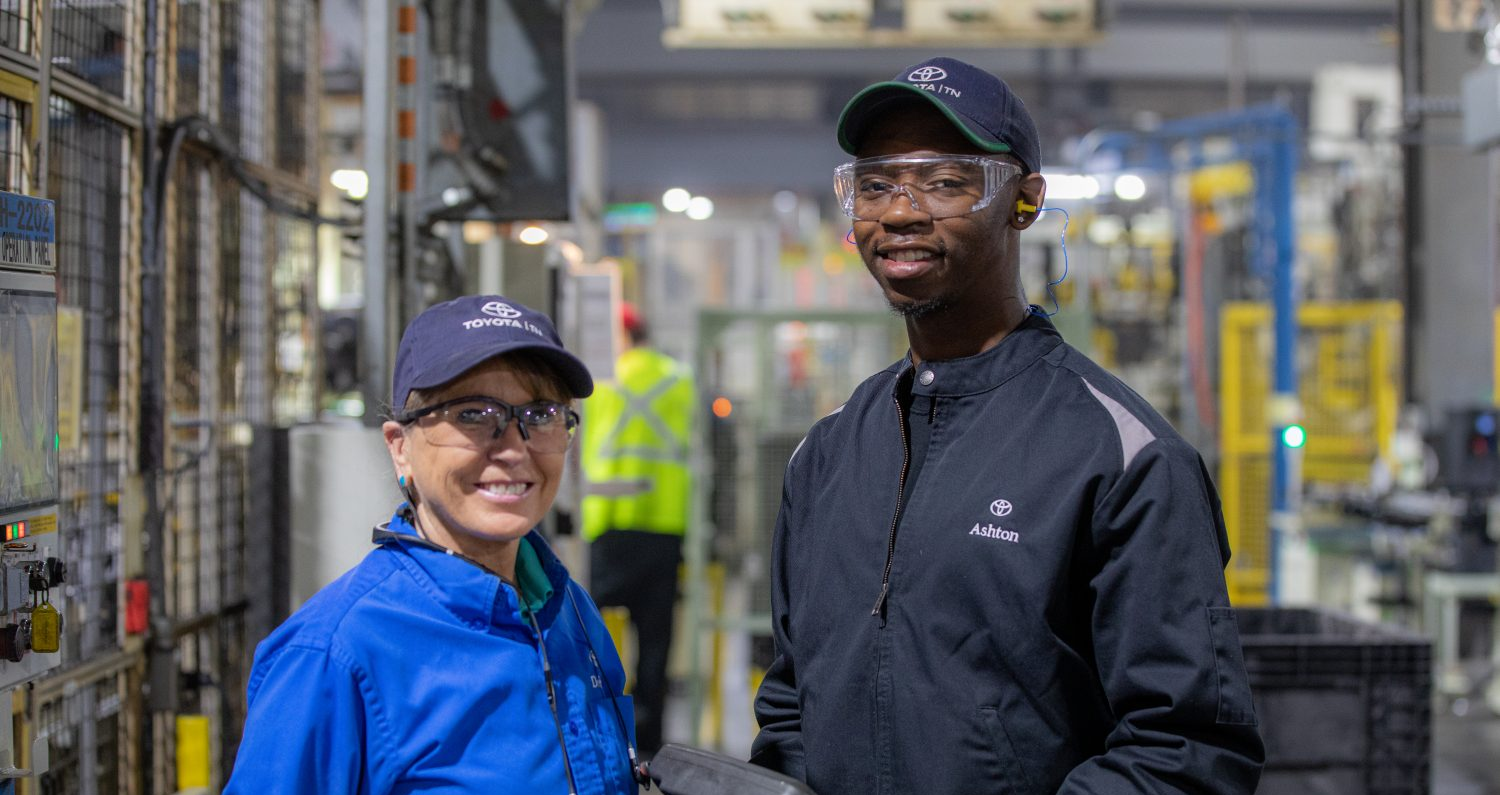
Toyota’s manufacturing facilities are the heart of all we do
Located throughout North America are thousands of Toyota’s highly skilled and dedicated production and support employees producing component parts and assembling vehicles, all with precision, innovative focus and a customer-first mindset.
Operations Highlights

Toyota Motor Manufacturing, Texas (TMMTX)
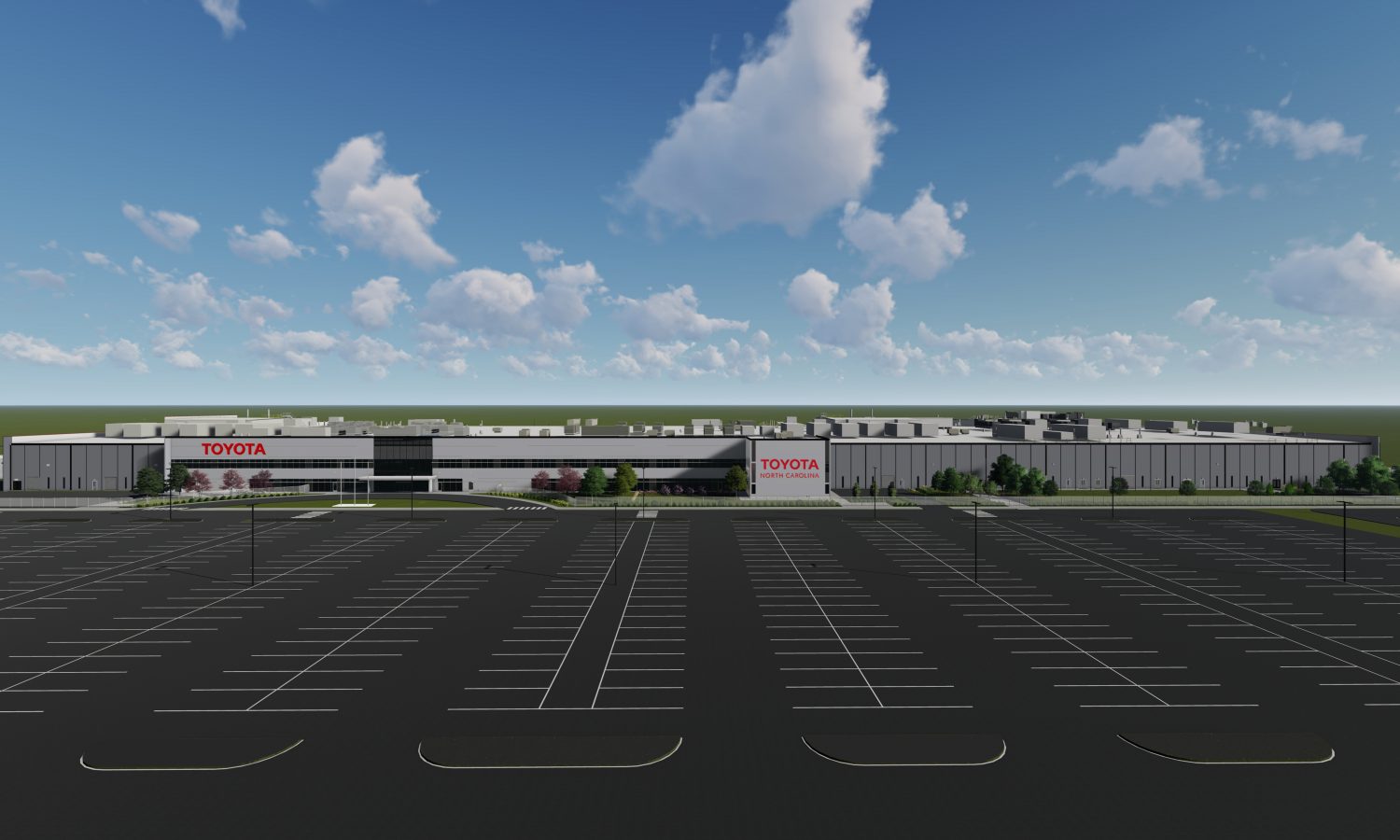
Toyota Battery Manufacturing, North Carolina (TBMNC)

CALTY Design Research

Our Operations Map
Our North American operations reach far and wide. Click below to enter our interactive guide to learn more about how we’re working together across the U.S. A fast facts sheet is also available for download below.
Design, Research & Development
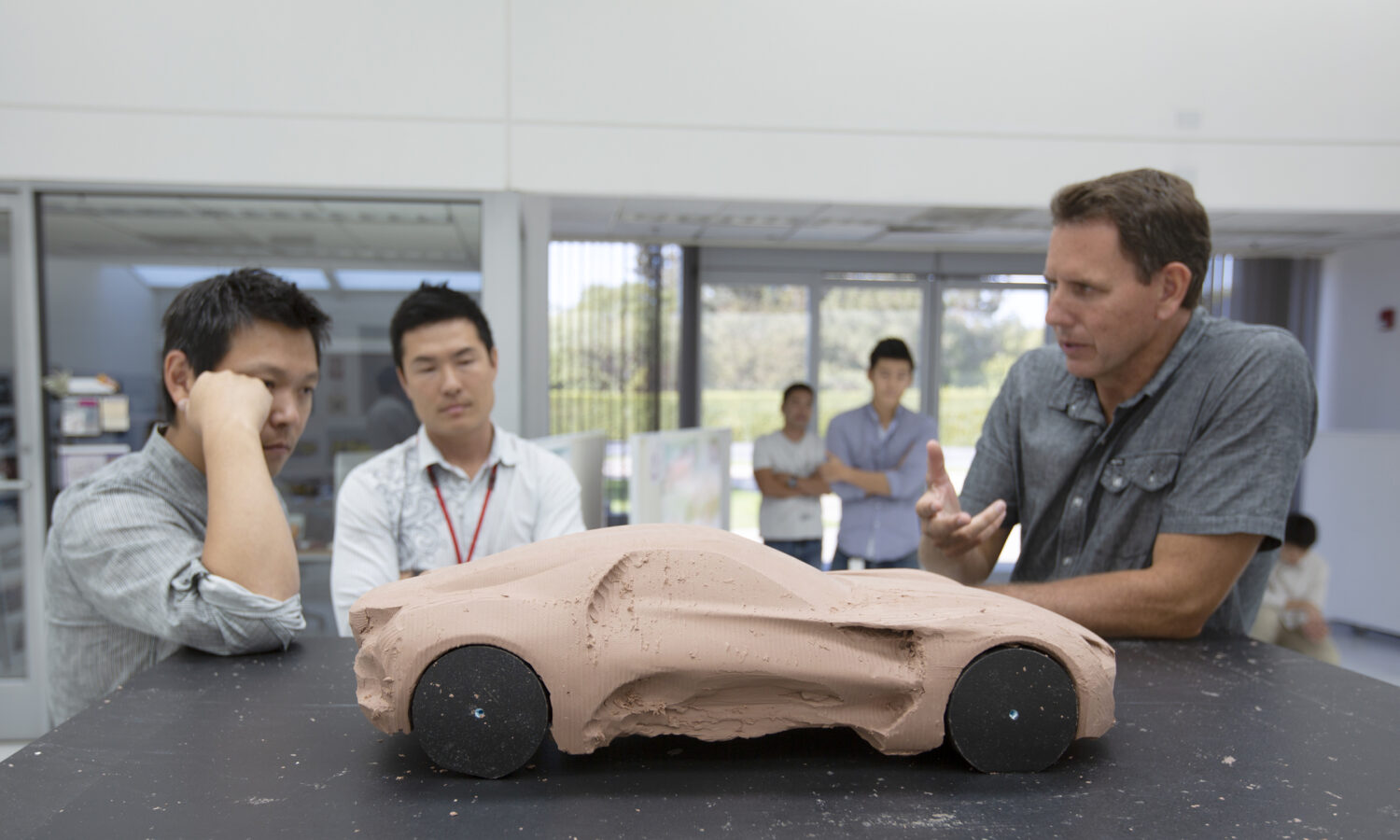
Inspiration that moves you
This is where beauty meets brains. At our Calty Design Research facilities in Ann Arbor, Oakland and Newport Beach, some of the most innovative minds in the automotive industry are creating bold and innovative exterior and interior designs for everything from cutting-edge Lexus concept vehicles like the 2012 Lexus LF-LC to our halo 2020 Toyota Supra.
While the Ann Arbor, Michigan design studio works closely together with engineers at the Toyota Technical Center on North American production trucks and cars like the rugged 2016 Tacoma and the all-new 2021 Sienna, the California’s Newport Beach studio works on advanced and experimental designs such as the exciting 2014 FT-1, the futuristic 2017 Concept-i and the expressive 2018 Lexus LF-1 Limitless. The Oakland, California studio called the Toyota Innovation Hub focuses on improving the human mobility experience. Calty Design Research has contributed to the design of 55 production models – from the 1978 Celica to the 1997 Prius and on to the 2021 Sienna. With more than 100 team members and a $7.9 million investment, Calty designers have helped to create over 125 production, concept and NASCAR vehicles.
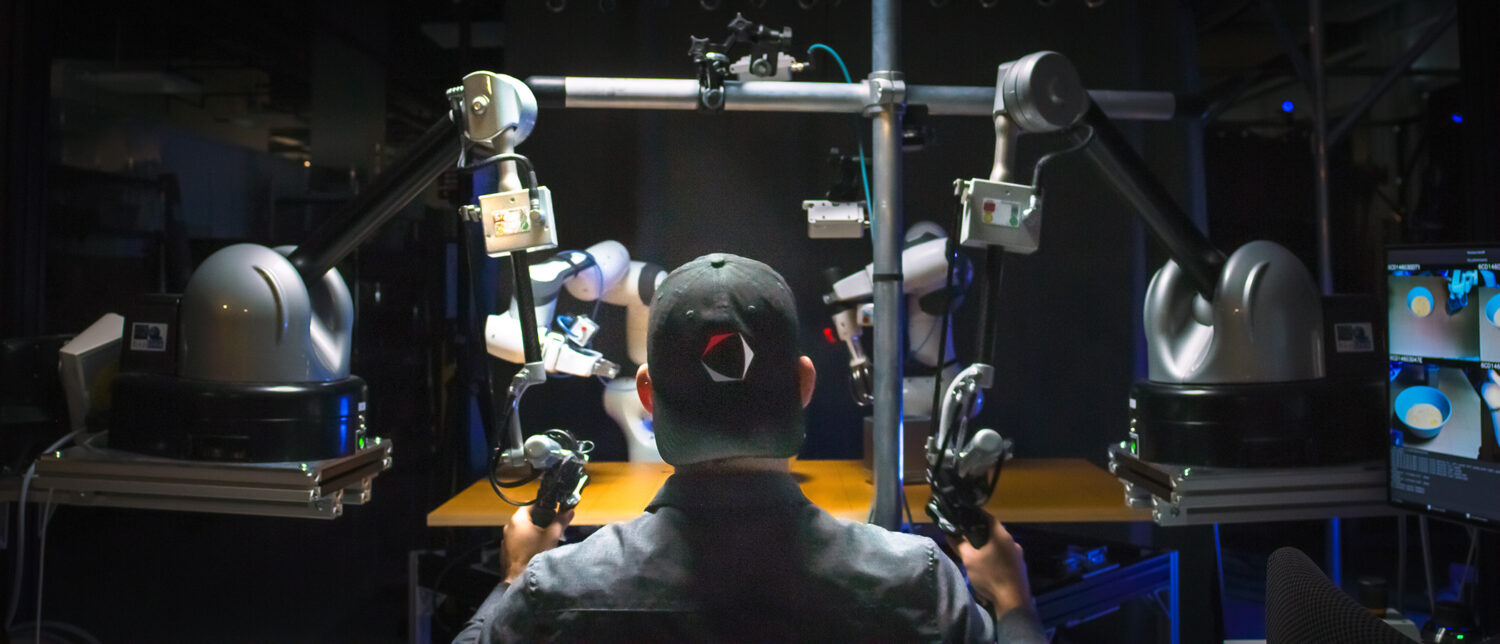
Where technology meets passion
For 50 years, Toyota Motor North America Research and Development (TMNA R&D), has led engineering for several of the best-selling Toyota vehicles on U.S. roads. Headquartered in York Township, Michigan, TMNA R&D is now creating both next-generation vehicles and new and advanced mobility concepts that can better move people, goods and information. Toyota’s innovation has produced more patents from the United States Patent and Trademark Office than any other automaker for the past 8 years (2,753 in 2021). TMNA R&D is also pursuing Toyota’s mission to “Produce Happiness for All” by making life safer, easier and more enjoyable. Globally, Toyota spends approximately $1 million per hour on R&D to ensure that Toyota rapidly and continuously develops cutting-edge, high-quality, and appealing vehicles.
- Calty Design Research
- Toyota Motor North America Research and Development
- Engineering & Manufacturing

The heart of all we do
We're always looking for ways to do things better, and that begins with engineering and manufacturing. Throughout North America, tens of thousands of our team members continually strive to improve not just our cars but everything we do. The reason? Our customers are counting on it.

Driving success since 1957
Based in Plano, Texas, Toyota Motor Sales, U.S.A. Inc. (TMS) supports nearly 1,500 Toyota and Lexus dealerships in the U.S., ensuring that the needs of both driver and dealer are accommodated throughout the sales process.
Every vehicle sold in the U.S. depends upon this extensive network of dedicated professionals who align sales and marketing resources for our dealers nationwide.
With our ten regional offices and two private distributors across the U.S., we’ve strengthened and localized our operations so that we can make decisions closer to our customers and respond faster than ever before.

Helping millions of people drive our quality vehicles home
As our finance arm, Toyota Financial Services (TFS) has helped millions of people get to a very good place: into the driver’s seat of one of our vehicles. Working with participating Toyota dealers, TFS offers a full range of lease, purchase and protection plans, and, of course, the friendly, attentive service our customers deserve. Headquartered in Plano, Texas, TFS serves customers and dealers with 3,300 associates among three customer service centers, three regional offices and 30 dealer sales and service offices throughout America. 3

Dedicated to helping you go places
We’re proud of our dealer teams working at nearly 1,500 Toyota and Lexus dealerships across North America. As professionals, they work hard to help their customers have the most satisfying, most reliable and enjoyable experience possible. As human beings, they work to help their environment, their communities and people in need. 3
Cookie Consent
We use the following categories of cookies on our website:
Necessary and Performance Cookies
Necessary cookies are essential to provide you with the website’s core functionality. Performance cookies collect information about the performance of our website and how our website is used (e.g., basic site usage analytics, such as number of visits and time spent on the site).
Functional Cookies
Functional cookies enable us to provide enhanced website functionality, including Local Specials, Offers, Dealer Locator, etc. They also enable us to personalize the website with more relevant content related to your interests.
Targeting Cookies
Targeting cookies (also known as advertising cookies) collect information about your online activities for the purpose of delivering relevant advertisements across websites or online services.
- 0 . Includes all dealers and suppliers.
- 1 . Data as of 1/31/23.
- 2 . Represents "Outside-Company-Time" for CY 2020.
- 3 . All data as of December 2021, except where noted.
- 4 . Toyota vehicles and components assembled using U.S. and globally sourced parts (CYE2022).
- 5 . Parts, materials and components (CY2021). Goods and Services (CY2021).
- 6 . Represents direct dealer and Toyota-dedicated supplier employees (CYE2021).
- 7 . Includes U.S. (not HI) and Puerto Rico.
- 8 . As of CYE2023.
- 9 . Includes direct, dealer and supplier employees and jobs created through their spending.
- 10 . All data as of December 31, 2021, except where noted. All figures are rounded and reported as U.S. dollars, except where noted. State and location investment figures are based on different parameters; therefore, figures may vary.
- 11 . CY 2020.
- 12 . Cumulative to Date.
- 13 . As of December 31, 2020. May represent more than one location. Canada dealer totals include Lexus and Toyota dealers.
- 14 . Represents only a selection of parts purchased.
- 15 . As of August 2023.
- 16 . Figure is projected.
- 17 . As part of the brand transition beginning in August 2016, model year 2019 Scion vehicles will be rebadged as Toyotas.
- 18 . Based on Toyota data. Includes direct employees and dealer employees.
- 19 . Shown in U.S. dollars to reflect investment from US based operations of TEMA.
- 20 . As of CYE2021.
- 21 . Including our joint venture plant in Alabama.
- 22 . 2015 Center for Automotive Research Study. Includes direct, dealer and supplier employees, and jobs created through their spending.
- 23 . Employment and Investment are reflective of the combined TMMMO and TMMTN numbers.
- 24 . Data is CYTD as of 2/6/23.
- 25 . Data is CYTD as of 1/31/23.
- 26 . As of March 1, 2022. Includes on-site suppliers.

- Case Studies
Technology & Operations

Toyota Motor Manufacturing, U.S.A., Inc.
Write a review, are you an educator.
Register as a Premium Educator at hbsp.harvard.edu , plan a course, and save your students up to 50% with your academic discount.
Product Description
Publication Date: September 08, 1992
Source: Harvard Business School
On May 1, 1992, Doug Friesen, manager of assembly for Toyota's Georgetown, Kentucky, plant, faces a problem with the seats installed in the plant's sole product--Camrys. A growing number of cars are sitting off-line with defective seats or are missing them entirely. This situation is one of several causes of recent overtime, yet neither the reason for the problem nor a solution is readily apparent. As the plant is an exemplar of Toyota's famed production system (TPS), Friesen is determined that, if possible, the situation will be resolved using TPS principles and tools. Students are asked to suggest what action(s) Friesen should take and to analyze whether Georgetown's current handling of the seat problem fits within the TPS philosophy. This case is accompanied by a Video Short that can be shown in class or included in a digital coursepack. Instructors should consider the timing of making the video available to students, as it may reveal key case details.

This Product Also Appears In
Related products.

New United Motor Manufacturing, Inc. (A)

New United Motors Manufacturing, Inc. (NUMMI)

New United Motor Manufacturing, Inc. (B)
Copyright permissions.
To obtain copyright permission to share this PDF with your team, purchase one copy per user.
Order for your team and save!

Product details

Time period
Geographical setting, featured company, featured protagonist.
- Doug Friesen (male), Manger of assembly

- For educators
- English (US)
- English (India)
- English (UK)
- Greek Alphabet
This problem has been solved!
You'll get a detailed solution from a subject matter expert that helps you learn core concepts.
Question: Case STudy - Toyota Motor Manufacturing, U.S.A., Inc.(HAVARD BUSINESS PUBLICATION EDUCATION ) 1. The case synoposis (a brief summary of the case background and key issues) 2. What are the possible causes of the seat problem? What is the real problem facing Doug Friesen? 3. What are the key elements of TPS? Where, if at all, does the current routine for
Case STudy - Toyota Motor Manufacturing, U.S.A., Inc.(HAVARD BUSINESS PUBLICATION EDUCATION )
1. The case synoposis (a brief summary of the case background and key issues)
2. What are the possible causes of the seat problem? What is the real problem facing Doug Friesen?
3. What are the key elements of TPS? Where, if at all, does the current routine for handling defective seats differ from the principles of TPS?
4. As Doug Friesen, what would you do to address the seat problem? Where would you focus your attention and solution efforts?
The case synopsis: The case study revolves around Toyota Motor Manufacturing, U.S.A., Inc. and highli...

Not the question you’re looking for?
Post any question and get expert help quickly.

- Order Status
- Testimonials
- What Makes Us Different
TOYOTA MOTOR MANUFACTURING, U.S.A., Inc. Harvard Case Solution & Analysis
Home >> Management Case Studies >> TOYOTA MOTOR MANUFACTURING, U.S.A., Inc.
1. What are the principal elements of the Toyota Production System? What capabilities must an organization possess in order to implement TPS effectively?
The Toyota production system is comprised of two main guiding principal elements that will prove helpful in the facilitation of critical processes. The first principal element that was of great importance in Toyota production system was the adoption of Just in time approach under which the cars were only produced at the time when they were needed and the material that has to be used was also specified in this process in order to avoid any problems with regards to wastage.
Moreover, this principle also focused on the wastage that was related to the transportation as well as the wastage from production. Despite this, the second most important principal element of Toyota production system is Jidoka which is mainly focused over taking care of the quality at the source before the product has been delivered to the customers.
In addition, this is among the major JIT principles because it entails the correction as well as the identification of hurdles at the time of production in order to avoid the loss of customers and revenues. Jidoka also includes the quality control and inspection of the manufacturing process and the responsibility with regards to quality is placed on everyone inside the organization.
Furthermore, in order to implement TPS effectively an organization will have to maintain strong and long lasting relations with its suppliers because under the JIT approach the production only started at the time when the customer places an order. Hence, after the placement of an order an organization should have the capability to have a backup at the organization in order to avoid any problems with regards to the loss of sales. It should also possess the latest technology and an experienced staff at the organization in order to retain the level of quality that they were able to maintain for so long. On the other hand, an organization must have the capability to have sufficient amount of financial resources in order to carry out manufacturing effectively.
2. As Doug Friesen, what would you do to address the seat problem? What options exist? Where would you focus your attention and solution efforts? What would you recommend? Why?
First of all the point that is to be addressed is to find an actual reason behind the existence of the problem. Hence, by taking account of the defect data from exhibit 8 which involves the identification of 5 seat defects that is constituted of almost 87% of the rejected seats from 14 th April up to 30 th April.
So Doug Friesen should undertake the option of gathering the cross-functional team of KFS and TMM employees from several disciplines in order to address the seat problem as well as ascertaining the number of And on pulls that was related to the rear seat selection on the right and left side that is almost more than 3 to 6 times higher in some of the cases.
Moreover, after identifying the problematic areas like material flow, seat bolsters broken and the missing part as well as the seat back broken will prove helpful in addressing these issues. Therefore, Doug Friesen will have to keep his attention and the solution efforts on the rear seat installation station as compared to the front seat installation and this may also be linked to the prospective team members who are rotated into the area at the start of April.However, the reason behind recommending this approach is based upon the determination of the root cause of the defect that took place because this will be the only way which will prove beneficial for accurately addressing these issues so they do not occur again in the future. TOYOTA MOTOR MANUFACTURING, U.S.A., Inc. Case Solution
3. Can an operating system like TPS lead to sustainable competitive advantage? How easy or hard would it be for another organization to copy TPS?
Yes, the operating system like Toyota production system can lead to the sustainable competitive advantage because, beyond merely the reduction of costs and bringing improvements in the efficiency this production technique includes the introduction of systems as well as the development of skills with the staff that will provide support with regards to the changes in the work place.
Hence, if Toyota will be able to maintain its performance in the long term and can keep its customers satisfied, then it can rule over the market by being a market leader.Despite this, the imitation of the Toyota production system may or may not be easy for another organization which is operating in the same industry sector...............................
This is just a sample partial case solution. Please place the order on the website to order your own originally done case solution.
Related Case Solutions & Analyses:

Hire us for Originally Written Case Solution/ Analysis
Like us and get updates:.
Harvard Case Solutions
Search Case Solutions
- Accounting Case Solutions
- Auditing Case Studies
- Business Case Studies
- Economics Case Solutions
- Finance Case Studies Analysis
- Harvard Case Study Analysis Solutions
- Human Resource Cases
- Ivey Case Solutions
- Management Case Studies
- Marketing HBS Case Solutions
- Operations Management Case Studies
- Supply Chain Management Cases
- Taxation Case Studies
More From Management Case Studies
- Ligand Pharmaceuticals Incorporated
- Employees: The Key Link to Corporate Reputation Management
- Vic Young and Fishery Products International (A)
- High Mountain Technologies
- Taking a Step Back Before Moving Forward: Adopting a Collaboration Platform
- Owens & Minor Inc. (B)
Contact us:

Check Order Status

How Does it Work?
Why TheCaseSolutions.com?


IMAGES
VIDEO
COMMENTS
Save. Summary. Toyota has fared better than many of its competitors in riding out the supply chain disruptions of recent years. But focusing on how Toyota had stockpiled semiconductors and the ...
Unlock Case Solution Now! Get instant access to this case solution with a simple, one-time payment ($24.90). You'll be redirected to the full case solution. You will receive an access link to the solution via email. Doug Friesen, manager of assembly for one of Toyota Motor Manufacturing plant, was facing a huge problem.
Abstract. On May 1, 1992, Doug Friesen, manager of assembly for Toyota's Georgetown, Kentucky, plant, faces a problem with the seats installed in the plant's sole product--Camrys. A growing number of cars are sitting off-line with defective seats or are missing them entirely. This situation is one of several causes of recent overtime, yet ...
3.7 Case Study: Toyota's Successful Strategy in Indonesia 3.8 Strategic M&A, Partnerships, Joint Ventures, and Alliances ... nations following the United States into recession. Industry revenue fell about 15.4% in 2009. ... the Lean Manufacturing concept. This concept also includes innovative practices like Just in Time, Kaizen, and Six Sigma ...
The Contradictions That Drive Toyota's Success. Stable and paranoid, systematic and experimental, formal and frank: The success of Toyota, a pathbreaking six-year study reveals, is due as much ...
Today, Toyota operates 14 manufacturing plants in North America, and employs more than 32,000 people to design, engineer and assemble almost half of the vehicles Toyota sells in the United States. By manufacturing in North America, Toyota supports regional suppliers and economies, fosters local communities and assembles high-quality cars and ...
2. In July 1988, Toyota Motor Manufacturing, U.S.A. (TMM) began volume production on a 1,300 acre site in Georgetown, near Lexington. The plant had an annual capacity of 200,000 Toyota Camry sedans, which would replace the bulk of Japanese imports of the same model. In 1992, TMM was expected to supply 240,000 of the all-new Camrys, whose sales ...
ANALYSIS AND APPLICATION OF THE TOYOTA PRODUCTION SYSTEM 8 its United States factories, whereas Ford, General Motors, and Chrysler necessitate 2.97, 3.04, and 3.20 employees, respectively. From an implementation perspective in American industry, by-products of autonomation,
Manufacturing processes Operations and supply chain management Quality management. Source: Harvard Business School. Product #: 693019-PDF-ENG. Length: 22 page (s) On May 1, 1992, Doug Friesen, manager of assembly for Toyota's Georgetown, Kentucky, plant, faces a problem with the seats installed in the plant's so.
Best Practices Case Study. About Toyota Motor North America ... (TMNA) operates ten manufacturing plants throughout the U.S. where over 1 million vehicles are assembled each year. Their corporate vision of "limitless possibilities for all" is woven into initiatives around physical, social, and socio-economic mobility and ... Toyota was also ...
In conclusion, the case study of Toyota Motor Manufacturing, U.S.A., Inc. highlights the successful implementation of lean manufacturing principles, just-in-time production system, total quality management, and continuous improvement. The company's commitment to operational excellence and the kaizen mindset has allowed it to achieve high levels ...
Toyota's manufacturing facilities are the heart of all we do ... Toyota's innovation has produced more patents from the United States Patent and Trademark Office than any other automaker for the past 8 years (2,753 in 2021). ... 22. 2015 Center for Automotive Research Study. Includes direct, dealer and supplier employees, and jobs created ...
The Case Centre is a not-for-profit company limited by guarantee, registered in England No 1129396 and entered in the Register of Charities No 267516. VAT No GB 870 9608 93.
Product Description. Publication Date: September 08, 1992. Source: Harvard Business School. On May 1, 1992, Doug Friesen, manager of assembly for Toyota's Georgetown, Kentucky, plant, faces a problem with the seats installed in the plant's sole product--Camrys. A growing number of cars are sitting off-line with defective seats or are missing ...
About. Abstract. On May 1, 1992, Doug Friesen, manager of assembly for Toyota's Georgetown, Kentucky, plant, faces a problem with the seats installed in the plant's sole product-Camrys. A growing number of cars are sitting offline with defective seats or are missing them entirely. This situation is one of several causes of recent overtime, yet ...
Toyota Motors Manufacturing U.S.A Inc. Case Study Solution. Introduction. The Toyota motor manufacturing company is a Japanese Company that was founded in 1937. It has long history in manufacturing of the car, and has gained expertise in producing quality cars at affordable prices.
Your solution's ready to go! Our expert help has broken down your problem into an easy-to-learn solution you can count on. Question: Case STudy - Toyota Motor Manufacturing, U.S.A., Inc. (HAVARD BUSINESS PUBLICATION EDUCATION ) 1. The case synoposis (a brief summary of the case background and key issues) 2.
Yes, the operating system like Toyota production system can lead to the sustainable competitive advantage because, beyond merely the reduction of costs and bringing improvements in the efficiency this production technique includes the introduction of systems as well as the development of skills with the staff that will provide support with ...